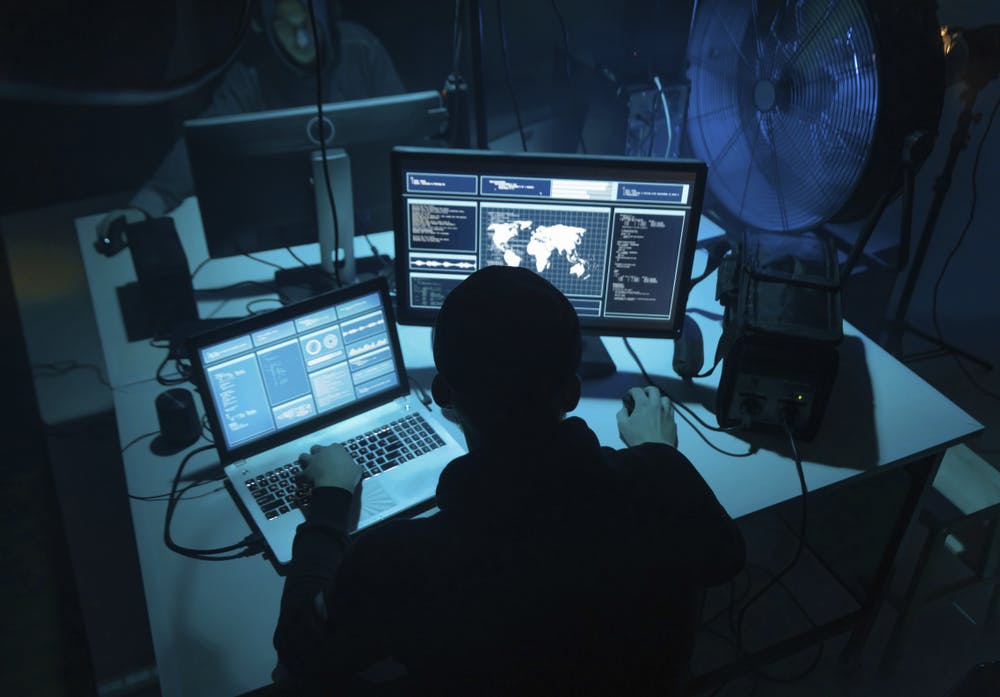CIOs are Implementing Zero Trust to Secure IT Infrastructure
CISA’s Robert Costello and Commerce’s Nagesh Rao talk zero trust, standardization and culture change.

The Department of Commerce and Cybersecurity and Infrastructure Security Agency (CISA) are implementing new security strategies like zero trust and multifactor authentication (MFA) to build out resilient IT infrastructures as the cyber threat landscape continues to evolve.
CISA is in a unique position, where they help other federal agencies comply and align with federal security mandates. The agency’s CIO Robert Costello explained during GovCIO Media & Research’s Blueprints of Tomorrow virtual event that he’s focusing on zero trust solutions like MFA, faster ATOs, continuous evaluations and risk-based approaches.
“I have to make sure all the programs of CISA have the technology that they need to deploy those solutions to the rest of the federal civilian executive branch or critical infrastructure partners. A big part of my role there is making sure that we’re modernizing our own internal approach to security,” Costello said. “I think we’ve been really successful there.”
Nagesh Rao, Commerce Bureau of Industry and Security (BIS) CIO, explained some of the zero trust pilots his team has launched to develop a “security first” mindset. He noted that zero trust is not an end-all, be-all solution, but it can help agencies prepare for and quickly mitigate evolving cyber threats.
“I think everyone thinks that zero trust means it’s going to be secure and safe,” Rao said. “[But] if a hacker has the mindset to break in, they’re going to break in — they’ll figure it out. What we have to do is be responsive to that if it does happen — be ready for it, be able to counter it, mitigate it and correct it.”
Rao’s current focus is moving to the cloud. He noted that BIS is on target to be 100% cloud native within the next four to six weeks. Once completely cloud native, Rao will focus his efforts on leveraging the next generation of cloud solutions, specifically related to cybersecurity.
As DOC continues to modernize and secure its infrastructure, Rao offered advice to industry partners: standardize solutions.
“I have to have something that’s portable. I have that’s not that can change quickly. Stop doing customization,” Rao said. “Work off the baseline that everyone operates on, then you build off from that.”
Workforce training and recruitment is top of mind as CISA and Commerce continue to accelerate security. By focusing on the people, agencies will be able to better account for identities and devices accessing networks, which became even more critical with the COVID-19 pandemic and remote work.
“It comes down to the people first when it comes to cybersecurity and ensuring that risk model — people, people, people — that’s what’s so most important,” Rao said. “I’m noticing it with my CISO team and my colleagues in the cybersecurity area that it’s education, awareness and understanding.”
Costello explained that CISA is adding flexibility to attract and retain top talent through offerings like telework, modern technology and automation to reduce workforce burdens. DHS also recently launched its new hiring system, the DHS Cybersecurity Service, to streamline hiring processes, offer more competitive compensation and increase diversity.
“It’s not just around providing the proper training, but it’s also recruiting efforts as well,” Costello said. “We want an environment where people can bring up issues as they occur. I’d rather have people over report potential security issues than under report them. That’s really important.”
This is a carousel with manually rotating slides. Use Next and Previous buttons to navigate or jump to a slide with the slide dots
-

DOD Can No Longer Assume Superiority in Digital Warfare, Officials Warn
The DOD must make concerted efforts to address cyber vulnerabilities to maintain the tactical edge, military leaders said at HammerCon 2025.
4m read -

Tracking CIOs in Trump's Second Term
Stay informed on the latest shifts in federal technology leadership as new CIOs are appointed and President Trump's second term takes shape.
6m read -

Inside Oak Ridge National Lab’s Pioneer Approach to AI
Energy Department’s Oak Ridge National Lab transforms AI vulnerabilities into strategic opportunities for national defense.
22m listen -

AWS Summit: Innovation Accelerates IT Delivery at DOD
Marine Corps Community Services is tackling outdated IT processes with agile development and cutting-edge cloud security to deliver mission-critical capabilities faster.
12m watch -

AWS Summit: NIST Secures High-Performance Computing Against Evolving Threats
NIST’s Yang Guo reveals the broad attack surface of high-performance computing and explains developing guidance and future-proofing security strategies.
9m watch -

Trump Overhauls Federal Cybersecurity with New Executive Order
The new directive aims to strengthen digital defenses while rolling back "burdensome" software requirements and refocusing AI security.
3m read -

AWS Summit: Forging Successful Cloud Modernization Partnerships
Industry leaders share insights on the critical role industry partnerships have in enabling government agencies to navigate procurement challenges for cloud and zero trust solutions.
24m watch Partner Content -

CISA's CVE Program and Why it Matters for Zero Trust
The vulnerability program provides the cybersecurity community visibility into software as part of a key pillar of CISA's zero trust model.
5m read -

Air Force, Coast Guard Talk Data Security Efforts for AI Development
The services' AI initiatives include efforts like creating clean training data, countering data poisoning and bridging siloed teams.
4m read -

DHS Secretary Urges Congress to Reauthorize CISA 2015
Federal leaders highlight CISA 2015's role in strengthening public-private partnerships and defending against evolving cyber threats.
3m read -

Rep. Gerry Connolly Leaves Lasting Mark on Federal Tech
Connolly's leadership in Congress significantly advanced government IT, emphasizing accountability, efficiency and a robust cybersecurity posture.
4m read -

Agencies Use AI to Boost Efficiency, Cybersecurity Under White House Mandates
DLA and GAO are investigating how AI can boost efficiency and bolster cybersecurity as agencies align with the president's tech directives.
3m read
















